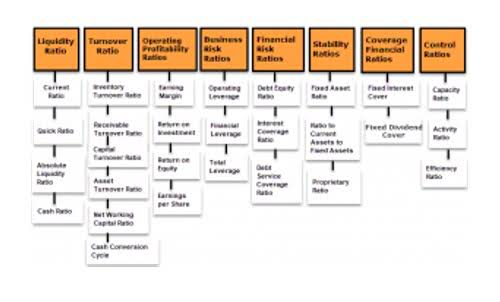
To account for this uncertainty, companies set aside an allowance for doubtful accounts, which reduces the gross accounts receivable balance to a more accurate net realizable value. Contra assets play a pivotal role in the financial statements of a company, offering a more transparent view of the net value of related assets. They are essentially negative assets that are reported on a company’s balance sheet and offset the balance of the assets to which they are related.
Aging of Accounts Receivable Method
Contra assets are not just accounting entries; they embody the prudence of a company’s financial practices and its readiness to acknowledge potential losses. They serve as a testament to the integrity of financial reporting and the ongoing efforts to provide stakeholders with a clear and accurate picture of a company’s financial health. Moreover, the allowance for doubtful accounts can improve the quality of financial analysis. Ratios such as the accounts receivable turnover and the current ratio become more meaningful when the net realizable value of receivables is used. This adjustment provides a clearer picture of the company’s liquidity and operational efficiency. Additionally, the allowance method can aid in better cash flow management, as it encourages companies to monitor and manage their receivables more proactively.
Financial Reporting Implications

The choice between bad debt expense and allowance for doubtful accounts also carries tax implications. Under the direct write-off method, bad debts are only recognized for tax purposes when they are deemed uncollectible. This timing can lead to deferred tax assets or liabilities, depending on the difference between the tax and book treatment of bad debts. Companies may find this method advantageous in periods of high profitability, as it allows them to defer tax liabilities. The purpose of these accounts is to ensure that the financial statements accurately reflect the assets’ net value. For instance, when an asset account like equipment decreases in value due to depreciation, a contra asset account called “accumulated depreciation” is increased.

Customer Helpdesk

The percentage of sales method assigns a flat rate to each accounting period’s total sales. Using previous invoicing data, your accounting team will estimate what percentage of credit sales will be uncollectible. The allowance for doubtful accounts ensures that the financial statements are prudent, by reflecting management’s expectations – not just contractual amounts – in the balance sheet.
Types of Contra Assets

This method anticipates that some receivables will not be collected, and it sets aside a reserve to cover these anticipated losses. By doing so, it aligns with the matching principle in accounting, which aims to match revenues with the expenses incurred to generate them within the same period. When posting transactions, one would credit the contra asset account to increase its balance, which decreases the net value of the corresponding Bookkeeping for Etsy Sellers asset.
- The ability to anticipate and respond to changes in the economic environment, regulatory landscape, and industry-specific factors will be essential for the accurate representation of a company’s financial position.
- The allowance is an estimated reserve for potential bad debts created as a preventive measure, while bad debt expense is the actual amount recognized as a loss when a specific account is deemed uncollectible.
- Additionally, the allowance for doubtful accounts in June starts with a balance of zero.
- By estimating potential losses before they occur, companies present a more honest picture of their financial health while properly matching expenses to the periods when they earn revenue.
- By doing so, it aligns with the matching principle in accounting, which aims to match revenues with the expenses incurred to generate them within the same period.
By anticipating potential losses from uncollectible accounts, the allowance provides a more accurate measure of the net realizable value of receivables, thus enhancing the reliability of financial reporting. In this article, we’ll cover how the allowance for doubtful accounts affects the balance sheet and income statement. The Allowance for Doubtful income summary Accounts is a contra-asset account used in accounting to estimate the portion of a company’s receivables that may not be collected. This allowance is a key part of the accrual accounting method, ensuring that a company’s financial statements reflect a realistic view of its financial health. When a business sells goods or services on credit, it records accounts receivable, representing the money owed by customers.
- Conversely, an inadequate allowance might raise red flags, suggesting that the company is not adequately prepared for potential credit losses, which could lead to increased scrutiny from auditors and regulators.
- Another approach is the percentage of receivables method, which focuses on the outstanding accounts receivable at the end of a period.
- Bad debt is the expense account, which will show in the operating expense of the income statement.
- The accumulated depreciation account appears on the balance sheet and reduces the gross amount of fixed assets.
- An account that is 90 days overdue is more likely to be unpaid than an account that is 30 days past due.
Percentage of Credit Sales
- For the sake of this example, assume that there was no interest charged to the buyer because of the short-term nature or life of the loan.
- By reporting contra asset accounts on the balance sheet, users of financial statements can learn more about the assets of a company.
- The specific identification method allows a company to pick specific customers that it expects not to pay.
- This estimation can be based on various methods, such as the percentage of sales method or the aging of accounts receivable method.
- During an economic boom, the default rate might be low, resulting in a smaller allowance.
For an auditor, this allowance is a key area of focus during the audit process, as it involves significant management judgment and can be susceptible to manipulation. In bookkeeping, contra asset accounts contra asset account are pivotal as they serve to reduce the balance of related asset accounts. These accounts ensure that the values on the balance sheet reflect the actual net worth of assets.



